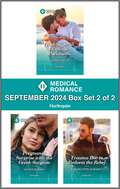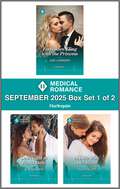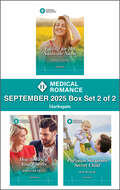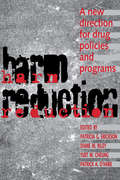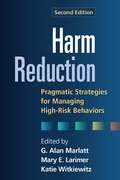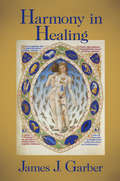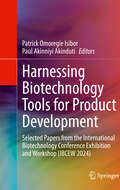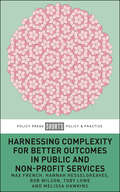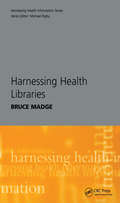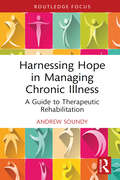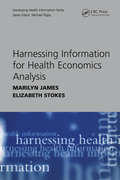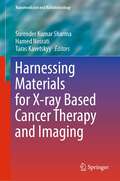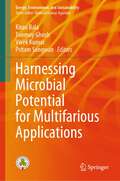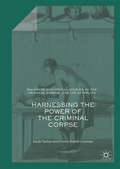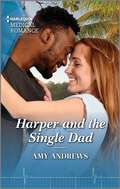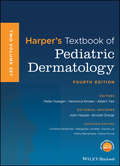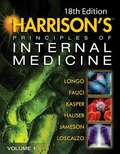- Table View
- List View
Harlequin Medical Romance September 2024 - Box Set 2 of 2
by Janice Lynn Charlotte Hawkes Luana DaRosaHarlequin Medical Romance brings you a collection of three new titles, available now! Enjoy these stories packed with pulse-racing romance and heart-racing medical drama.This Harlequin Medical Romance box set includes:RISKING IT ALL WITH THE PARAMEDICBy Janice LynnWhen unlucky-in-love doctor Ivy leads a medical team on a veterans&’ trip to Normandy, her sole thought is for the patients in her care. So she&’s unprepared for the frisson of attraction she feels at meeting fellow volunteer Caleb! It&’s clear the good-looking paramedic has ghosts of his own, but over the two weeks they&’re together, an undeniable connection forms… Only when they return home, will they be brave enough to risk everything and turn temporary…into happy-ever-after?PREGNANCY SURPRISE WITH THE GREEK SURGEONBy Luana DaRosaAfter Nikolas&’s intoxicating encounter with cardiologist Camila at a medical conference last month, bringing her to his cardiac institute in Athens is the best and worst decision the Greek surgeon could make. Professionally, her groundbreaking research could cure his patient. But as his colleague, she&’s now otherwise completely off-limits… The confirmed bachelor just never imagined that Cami would surprise him with the news that she&’s pregnant!TRAUMA DOC TO REDEEM THE REBELBy Charlotte HawkesFormer army surgeon Connor is instantly drawn to ER doc Nell. She&’s beautiful, intelligent and the first person to really see him—ever. Rebel Connor has spent years running away from his painful past, relationships and himself. But since Nell understands being abandoned in childhood, as he was, could she be the one woman to finally break through his barriers…and redeem his barricaded heart?
Harlequin Medical Romance September 2025 - Box Set 1 of 2
by Amy Andrews JC Harroway Tessa ScottHarlequin Medical Romance – September &‘25 – Box Set 1 of 2Harlequin Medical Romance brings you a collection of three new titles, available now! Enjoy these stories packed with pulse-racing romance and heart-racing medical drama.This Harlequin Medical Romance box set includes:FORBIDDEN FLING WITH THE PRINCESSBy Amy AndrewsWorld-class obstetric surgeon Edmund is furious that his long-awaited Seychelles retreat is hijacked by a helicopter carrying a smart-ass (if stunning) princess! Xiomara is determined to engage Edmund to save her cousin, the King&’s, unborn twins. He takes some persuading! Now in London together, a powerful attraction develops, and Xiomara learns Edmund&’s talents go far beyond surgery. He makes her feel empowered and free—in every sense! Until the paparazzi discover their secret affair, reminding them they come from impossibly different worlds…ONE NIGHT TO ROYAL BABYBy JC HarrowayFor months Dr. Lola Garcia has managed to resist letting illicit thoughts of brooding head of hospital security Xavier Torres consume her. Only when a cyclone hits, a desperate intimacy forms between them and all bets are off…leaving Lola expecting their one-night consequence! Lola&’s pregnancy jumpstarts the former military medic&’s protective instincts. But there&’s a secret he&’s keeping that will prove another shock. Xavier is royalty and their baby will be too! Can their fledgling relationship survive two life-changing revelations?A DATE WITH HER RIVALBy Tessa ScottWhen equine vet Maya discovers her father has hired another vet to help run their family practice, she&’s not pleased! Even if it is just temporarily. Nomadic Cal wouldn&’t be her first choice, either—the handsome Australian is entirely too confident and charming. The last time she got close to a colleague, it shattered her world—and her son&’s. If only Cal wasn&’t making it so hard to stay away. Especially when he arranges for Maya to win a charity auction. The prize—a date with him!
Harlequin Medical Romance September 2025 - Box Set 2 of 2
by Janice Lynn Sue MacKay Kristine LynnHarlequin Medical Romance – September &‘25 – Box Set 2 of 2Harlequin Medical Romance brings you a collection of three new titles, available now! Enjoy these stories packed with pulse-racing romance and heart-racing medical drama.This Harlequin Medical Romance box set includes:FALLING FOR HIS NASHVILLE NURSEBy Janice LynnDr. Wryn appears happy-go-lucky, but past pain bubbles beneath the surface. So, it&’s a surprise when Nashville Medical Clinic&’s captivating new nurse, Everleigh has his traitorous heart racing…which only worsens as he gets to know the single mom and her adorable son. Wryn should keep his distance—Everleigh swore off romance following her divorce. But when she admits to feeling the same, his restraint shatters. If a fling is all they can have, he&’ll treasure every moment. Falling for Everleigh was never part of the plan…HOW TO RESIST YOUR ENEMYBy Kristine LynnWorking for an elite football club means everything to team physician Olivia. So, she&’s blindsided when Dr. Mateo is brought in to work alongside her, certain that there&’s not enough room for the two of them. Until the chemistry they&’re denying catches the public&’s attention, after a fiery interaction is broadcast on TV…and infuriatingly good-looking Mateo suggests that becoming a dynamic duo is the ideal way to ensure they both stay. Except the more they pretend to be the perfect couple, the more real their connection feels…PARISIAN SURGEON&’S SECRET CHILDBy Sue MacKayBack in Paris after fifteen months abroad, nurse Camille must finally tell renowned surgeon, Etienne, that their brief relationship resulted in a baby girl! Coming from a wealthy background, Etienne has frequently been targeted for money, including being lied to about fatherhood. So Camille doesn&’t expect him to believe her, until he meets Elyna, and she can see the recognition in his eyes. As they bond over their daughter Camille increasingly wishes they could be a family—but can Etienne trust anyone to love him for himself…
Harlequin Romantic Suspense May 2015 Box Set
by Elle James C. J. Miller Lara Lacombe Jan SchliesmanLooking for heart-racing romance and high-stakes suspense? Want stories filled with life-and-death situations that cause sparks to fly between adventurous, strong women and brave, powerful men? This Harlequin® Romantic Suspense box set includes Heir to Murder by NEW YORK TIMES bestselling author Elle James, Capturing the Huntsman by C.J. Miller, Killer Exposure by Lara Lacombe, and Protecting His Brother's Bride by Jan Schliesman.Harlequin® Romantic Suspense brings you all that and more with 4 new full-length titles for one great price every month!
Harm Reduction
by Patricia G. Erickson Diane M. Riley Yuet W. Cheung Pat A. O'HareSince the First International Conference on the Reduction of Drug-Related Harm, held in 1990, the term 'harm reduction' has gained wide currency in the areas of public health and drug policy. Previously the field was characterized by heated struggle between prohibition and legalization of addictive substances, and this debate tended to obscure practical, collective approaches. Harm reduction, an approach which encompasses various policy directives and program initiatives was inspired by the positive outcomes of such public measures as needle-exchange programs for reduction of HIV risk, methadone maintenance programs, education on the risks of tobacco use, and programs designed to limit alcohol consumption.The essays in this book illustrate the scope and vigour of the emerging harm reduction model. The essays, drawn from seven international conferences on harm reduction, cover a wide variety of topics, including public policy, women and reproductive issues, the experiences of special populations, human rights; defining and measuring harm, and intervention.Researchers and practitioners will benefit from the varied papers in the volume, which combine insights into policy-making and front-line outreach efforts with comprehensive conceptual and empirical approaches. Harm Reduction represents an important initiative in making academic work accessible and useful to a larger community, and provides guidance for the development of effective policies and programs.
Harm Reduction, Second Edition
by G. Alan Marlatt Mary E. LarimerFrom addictions treatment pioneer G. Alan Marlatt and associates, this is the authoritative work on harm reduction: its principles, strategies, and practical applications. Contributors review programs that have been developed and tested for a range of high-risk behaviors, including problem drinking, tobacco use, illicit drug use, and risky sexual behavior. Flexible, tailored, culturally competent treatment approaches are described for marginalized and underserved communities. The volume also explores philosophical and policy-related debates surrounding this growing movement. New to This Edition, Reflects significant advances in research and clinical practice, as well as increasing professional acceptance of the harm reduction model.*Chapters on the current status of the field, applications to psychotherapy, and treatment of dual disorders. Chapters on additional populations (adolescent drinkers and Hispanic/Latino and Asian American substance users) and an additional substance (cannabis).
Harmony in Healing: The Theoretical Basis of Ancient and Medieval Medicine
by James GarberMedicine and astronomy are the oldest of all the sciences. They appear at first glance to be the original odd couple. Their union gave birth to a progeny that populated the Western world for more than two millennia. From an historical perspective, their marriage and mutual influence is undeniable. Cosmology and cosmogony, as natural philosophical aspects of astronomy, have gone hand in hand with the science of medicine from time immemorial. Indeed, medicine and the pseudoscience of astrology were for centuries inseparable.The ancients began the embryonic search for answers to questions that had puzzled humans for eons. No systematic approach to the nature of the universe was undertaken until the Sumerians, the Babylonians, and the Greeks began the quest for wisdom. The Greeks, beginning with Thales in the 6th century B.C.E., sought a unifying principle to explain the world as a whole. Because cosmology and medicine were among the few known sciences in ancient times, it was natural that these two apparently disparate disciplines should be combined to provide the theoretical basis of medicine--foundations that were to survive for nearly 2,400 years. This scientific structure rested firmly on the ancient principles of cosmology, astronomy, and the concept of universal harmony. This book tells the tale of these theoretical underpinnings and how they influenced humankind's efforts to maintain health and fight disease. Ultimately, the system was fundamentally flawed. Nonetheless, it lingered on for centuries beyond what common sense tells us it should have.Few comprehensive analyses of the relationship between cosmology and medicine have been undertaken in the astronomical or medical literature. For better or for worse, cosmological principles have had profound effects on the theory and practice of medicine over the centuries. It is time for historians, astronomers, physicians, and philosophers to acquaint themselves with the impact early cosmology has
Harnessing Biotechnology Tools for Product Development: Selected Papers from the International Biotechnology Conference Exhibition and Workshop (IBCEW 2024)
by Patrick Omoregie Isibor Paul Akinniyi AkindutiThis comprehensive guide that explores the application of biotechnology in creating innovative products across various industries for sustainable development in Nigeria, Africa, and globally. The book delves into the latest biotechnological techniques and tools, including genetic engineering, bioinformatics, and synthetic biology, highlighting their practical uses in pharmaceuticals, agriculture, environmental management, and industrial processes. It will give researchers, practitioners, and students a thorough understanding of how they can leverage biotechnology to drive product innovation, improve efficiency, and address global challenges. Case studies and real-world examples illustrate the potential and impact of biotechnology in modern product development. Provides an in-depth understanding of the latest biotechnology tools and techniques; Examines how biotechnology is used to address global issues like food security, environmental sustainability, and health; Examples and case studies offer insights into successful product development using biotechnological methods.
Harnessing Complexity for Better Outcomes in Public and Non-profit Services
by Rob Wilson Melissa Hawkins Max French Hannah Hesselgreaves Toby LoweePDF and ePUB available Open Access under CC-BY-NC-ND licence. How can public services and social interventions create and sustain good outcomes for the populations they serve? Building on research in public health, social epidemiology and the social determinants of health, this book presents complexity theory as an alternative basis for an outcome-oriented public management praxis. It takes a critical approach towards New Public Management and provides new conceptual inroads for reappraising public management in theory and practice. It advances two practical approaches: Human Learning Systems (a model for public service reform) and Learning Partnerships (a model for research and academic engagement in complex settings). With up-to-date and extensive discussions on public service reform, this book provides practical and action-oriented guidance for a radical change of course in management and governance.
Harnessing Health Libraries
by Bruce MadgeThe rise of evidence-based healthcare has put emphasis on finding specific evidence. Trying to find exactly the right article you are looking for can be vital especially when meeting a tight deadline or trying to find evidence for a particular treatment. This book from the Harnessing Health Information series shows the reader how to find the exact article quickly and efficiently. Fully referenced, it includes handy information such as acronyms with full descriptions and the available search tools. It looks at how novice users can find information in a straightforward and friendly way.
Harnessing Hope in Managing Chronic Illness: A Guide to Therapeutic Rehabilitation
by Andrew SoundyHarnessing hope is fundamental to adapting to a chronic illness or palliative illness, and this fascinating book provides a new framework that will enable physiotherapists and other healthcare professionals to engage with patients to create better interactions and outcomes for rehabilitation.Based on extensive research into how patients express their experiences, it identifies those factors that influence how hope can be used to benefit an interaction. It also considers central questions to illustrate how interactions can be psychologically mapped to assess emotions, adjustment, and hope. The book then features practical guidance on how to integrate the idea of hope into therapeutic conversations with patients, fostering acceptance and adaptation to the present, and looking towards the future.This book will interest any practitioner working with patients experiencing chronic pain or palliative illness, as well as students across physiotherapy, occupational therapy, and community nursing. It may also interest any general readers facing challenges around trauma or loss.
Harnessing Information for Health Economics Analysis
by Marilyn James Elizabeth StokesSeries Editor: Michael Rigby This completely up-to-date resource equips readers with practical tools to understand and apply health economic methods. It introduces the key economic tools and the data available that can assist an economic decision and covers a range of areas from primary care and national data to global indicators of health. The information presented is applicable to all economic issues - at individual practice or nationwide policy level. Harnessing Information for Health Economics Analysis is a vital handbook for all clinicians, managers, and policy makers and shapers who make decisions about planning, commissioning and delivering healthcare. It will also be of great value to health economists, and postgraduate students in health economics and related disciplines.
Harnessing Materials for X-ray Based Cancer Therapy and Imaging (Nanomedicine and Nanotoxicology)
by Surender Kumar Sharma Hamed Nosrati Taras KavetskyyThis book discusses the efficacy of nanomaterial-based X-rays enhancers against cancer therapy and imaging in both in vitro and in vivo systems. Also, synthesis, mechanism, and the related biological effects are given. Moreover, nanoparticle-based contrast agents to enhance the image quality are compiled. Finally, special nanoparticle-based contrast agents to enhance the contrast for targeted cancer therapy are covered and discussed.
Harnessing Microbial Potential for Multifarious Applications (Energy, Environment, and Sustainability)
by Vivek Kumar Kiran Bala Tonmoy Ghosh Pritam SangwanThis book discusses the current state of strategies that utilize the ability of microbes to remediate waste sources, such as wastewater streams and mine tails, and provide environmentally friendly options to mitigate soil and water pollution caused due to heavy metals. It also provides details about the development of biodegradable plastics from microbial sources and how they can be economical and greener alternatives to the currently used options. It will act as a single platform for combining the remedial powers of microbes which can be both sustainable and practical under a single volume. This text will be particularly useful for govt. institutions, academicians, and industry professionals, who deal in wastewater remediation and sustainability of currently used sources of plastics and other high-value metabolites. It will also be of practical help to engineers involved in remediation processes for wastewater and industrial waste.
Harnessing the Power of the Criminal Corpse (Palgrave Historical Studies In The Criminal Corpse And Its Afterlife Ser.)
by Sarah Tarlow Emma Battell LowmanThis open access book is the culmination of many years of research on what happened to the bodies of executed criminals in the past. Focusing on the eighteenth and nineteenth centuries, it looks at the consequences of the 1752 Murder Act. These criminal bodies had a crucial role in the history of medicine, and the history of crime, and great symbolic resonance in literature and popular culture. Starting with a consideration of the criminal corpse in the medieval and early modern periods, chapters go on to review the histories of criminal justice, of medical history and of gibbeting under the Murder Act, and ends with some discussion of the afterlives of the corpse, in literature, folklore and in contemporary medical ethics. Using sophisticated insights from cultural history, archaeology, literature, philosophy and ethics as well as medical and crime history, this book is a uniquely interdisciplinary take on a fascinating historical phenomenon.
Harper and the Single Dad (A Sydney Central Reunion #1)
by Amy AndrewsTensions run high when the doctor returns and one passionate night with her former flame changes all the rules. Find out what happens in the latest Harlequin Medical Romance by Amy Andrews. Reunited…for a life-changing second chance? Dr. Harper knows returning to Sydney as the Head of ER won&’t be easy. But her intense job is nothing compared to seeing first love, firefighter Yarran, again. Widowed single dad Yarran isn&’t the same man Harper left behind, yet it doesn&’t stop old feelings from resurfacing. With so much at stake, all they can have is friendship. Until one hot night breaks all the rules…From Harlequin Medical: Life and love in the world of modern medicine.A Sydney Central Reunion Book 1: Harper and the Single Dad by Amy AndrewsBook 2: Ivy's Fling with the Surgeon by Louisa GeorgeBook 3: Ali and the Rebel Doc by Emily ForbesBook 4: Phoebe's Baby Bombshell by JC Harroway
Harper's Practical Genetic Counselling, Eighth Edition
by Angus ClarkeHighly valued across the world by genetic counsellors, medical geneticists and other healthcare professionals, Harper's Practical Genetic Counselling has established itself over previous editions as the essential guide to counselling those at risk from inherited disorders. Fully revised by its new author Angus Clarke, and with additional input from colleagues, this eighth edition provides indispensable and up-to-date guidance, helping readers to navigate the profusion of new information in this area and the associated psychosocial and ethical considerations and concerns. Maintaining the trusted framework of earlier editions, the update presents the latest information on the use and interpretation of genetic test results, including new genomebased investigations and their application in the genetic counselling process. This book will help both the student and the practitioner, as genetic and genomic investigations become progressively more relevant to all healthcare professionals with the mainstreaming of genetics across the full range of medical practice. The eighth edition of this best-selling text will continue to be an essential source of reference for trainee and practitioner genetic counsellors and medical geneticists, for clinicians and nurses working in mainstream specialties who increasingly are dealing with the genetic aspects of disease, and for practitioners working in settings where referral to a genetics specialist is not readily available. It also provides invaluable background for other healthcare professionals, counsellors, social scientists, ethicists and genetics laboratory staff.
Harper's Textbook of Pediatric Dermatology
by Albert C. Yan Alan D. Irvine Peter H. HoegerThe third edition of this highly regarded text continues to provide a comprehensive resource for pediatric dermatologists. The book offers evidence-based diagnosis and treatment recommendations and covers both common and rare conditions, including emerging conditions and research, especially at the genetic level. A refreshing new text design makes the book more accessible, and new editors and contributors bring a distinctly international perspective to the work.
Harper's Textbook of Pediatric Dermatology
by John Harper Arnold P. Oranje Christine Bodemer Margarita Larralde David Luk Vibhu Mendiratta Diana PurvisA consummate classic with a fresh approach to pediatric dermatology Children´s skin is different. Maturation affects the epidermal barrier, the cutaneous microbiome, adnexal structures, vasculature, and transcutaneous absorption of drugs. The immature skin is more susceptible to pathogens and environmental disruption. Many genetic disorders are either present at birth or manifest early in childhood. Skin diseases thus present differently in children than in adults. Pediatric dermatology has seen significant advances over the last decade, particularly in the field of molecular genetics research, which has furthered our understanding of the pathogenesis of many skin diseases and the development of new approaches to treatment. This fourth edition of the Harper classic provides state-of-the-art information on all aspects of skin disease in children. It covers the diagnosis and treatment of all conditions - both common and rare - with a consistently evidence-based approach. Existing content has been refreshed and fully updated to reflect emerging thinking and to incorporate the latest in research and clinical data - especially at the genetic level. This new fourth edition includes: Greater focus on the genetics behind skin disease, including new genes/genodermatoses, progress in genetic analysis, and stem cell transplants Increased coverage of lasers and other technologies used to treat skin disease More summary tables, learning points, tables of differential diagnosis, and clinical algorithms for diagnosis and management Additional online features, including patient information links and multiple choice questions Harper's Textbook of Pediatric Dermatology delivers crucial clinical insights and up-to-date research information that spans the breadth of the field. As the most comprehensive reference book on this subject available, this revised fourth edition will support and guide the daily practice of both dermatologists and pediatricians across the world.
Harrison's Principles of Internal Medicine, Volume 1 (18th Edition)
by Anthony S. Fauci Tinsley Randolph Harrison Stephen L. Hauser J. Larry Jameson Dennis L. Kasper Dan L. Longo18th Edition of the medical book.
Harrison's Principles of Internal Medicine, Volume 2 (18th Edition)
by Anthony S. Fauci Tinsley Randolph Harrison Stephen L. Hauser J. Larry Jameson Dennis L. Kasper Dan L. Longo18th Edition of the medical book.
Harry St. Clair: Rogue or Doctor?
by Fiona McarthurThe secrets behind his smile Harry St Clair does a good job persuading people that the devil-may-care rogue is the real him, but midwife Bonnie McKenzie isnt fooled for a second! The real Harry St Clair is one of the best doctors in the southern hemisphere. The real Harry St Clair is buried under the weight of his devastating secrets a weight he no longer has to carry alone
Hartland's Medical & Dental Hypnosis: Third Edition
by David WaxmanIt is a tribute to the reputation and memory of the late Dr John Hartland that although more than twenty years have passed since Medical and Dental Hypnosis was first published, it has remained in demand throughout the world as one of the most popular textbooks of hypnotherapy. The present work has been extensively revised and updated while retaining the distinctive style of the original author. Much of the original content, now outdated, has been amended, deleted or extended, in order to bring the work into line with modern thinking and developments. The book contains 26 chapters divided into four parts: The History, Nature and Techniques of Hypnosis; Some Phenomena of Hypnosis and the Use of Advanced Techniques; The Clinical Application of Hypnosis and Other Uses and Some Abuses of Hypnosis. Although much of the material in the first two parts of the book is expository, it has nevertheless been extended to include more recent and better known techniques and this is reflected in more comprehensive reference lists at the end of each chapter. The third part, dealing with the clinical applications of hypnosis, is more fully documented. This is particularly so in the chapters dealing with treatment of neuroses, problems of personality and, most extensively, on hypnosis in the alleviation of pain and in surgery. New chapters dealing with the treatment of depression, the use of hypnotherapy in chronic and terminal illness and hypnosis with children are added. Part four is a completely new section covering the uses of hypnosis in competitive sports and criminal investigation as well as containing chapters on legal aspects and lay practitioners of hypnosis. The Appendix contains guidelines for the beginner in the proper application of hypnosis and the maintenance of ethical status and dignity.
Hartman's Complete Guide for the EKG Technician
by Wilma Lynne ClarkeThis Clear, concise, and up-to-date, Guide will help students master the skills and knowledge they need to pass EKG technician certification exams and to excel on the job. Unlike many EKG interpretation texts, this book is written specifically for students taking EKG technician courses or working toward EKG technician certification. <p><p> Presents basic anatomy, physiology, and pathophysiology in a way that relates clearly to the work of EKG technicians; Introduces EKG technology and the interpretation of the EKG in clear, organized steps; Provides step-by-step instructions for patient care and EKG testing procedures; Offers detailed, full-color photos and illustrations throughout the book; Contains over 100 practice exercises in the rhythm identification chapter, giving students the opportunity to view and interpret actual EKG tracings; Includes tip boxes, quick reference charts, chapter reviews, and a glossary to help students identify and focus on key material; Covers infection prevention, communication skills, scope of practice, and ethics as these subjects relate to the role of EKG technicians; Instructor's material includes over 100 additional EKG interpretation exercises, a practice certification exam, critical thinking activities, and test-taking tips.
Hartman's Nursing Assistant Care: Long-Term Care
by Jetta Fuzy Susan Alyare Hedman Suzanne RymerA comprehensive nursing assistant training textbook which includes information on long-term care, multiple chapters on home health care, and material on subacute and acute care. In addition it includes in-depth information on resident and client rights with sidebars that teach ways to promote independence and prevent abuse and neglect; a discussion of culture change; infection prevention; anatomy and physiology with an emphasis on normal changes of aging; updated nutrition information on MyPyramid, special diets, and feeding techniques; current information on legal issues, such as HIPAA and the Patient Self-Determination Act; 7 chapters on home health care, including information on medications, safety, infection prevention, mothers & newborns, and meal planning and preparation; a chapter containing subacute and acute care information, including pre- and post-operative care, as well as mechanical ventilation, chest tubes, and artificial airways.
